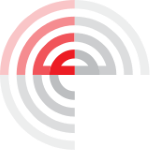Speaker
Description
In-plane lateral tests of timber based shear walls (e.g. light-frame or cross laminated timber walls) are the basis for the derivation of mechanical parameters required for the seismic and wind design (lateral load-bearing and displacement capacity, stiffness, ductility, etc.). The currently available testing standards, such as ISO 21581, do not provide explicit criteria for some testing parameters and boundary conditions, which are left to be decided upon with regard to the designated purpose of the tests. Racking tests can serve for evaluation of shear behaviour of the panels themselves or of the structural system as in actual conditions. In dependence of different aspect ratio and position in the structure (e.g. upper or lower building storey resulting in different vertical loads and boundary conditions), the behaviour of the panels can be mainly shear, rocking or combined shear-rocking.
In the paper, the experience and conclusions of in-plane shear testing from various experimental campaigns conducted at the Slovenian National Building and Civil Engineering Institute are presented. Furthermore, the influence of the loading rate on the recently tested cyclic response of two variations of cross laminated timber wall systems is investigated. It was found and confirmed that the loading rate influences not only the lateral load-bearing capacity, but also the energy dissipation, which is crucial for seismic resistance of structures. The work is relevant for the purpose of understanding the influence of different test setup variations, panel and connections characteristics and loading protocols on the seismic response of timber shear walls. The research is therefore aimed towards a valid comparison of results from different testing campaigns and between different laboratories.
| Keywords | In-plane lateral testing, cross laminated timber, loading rate, test setup variation |
|---|---|
| DOI | https://doi.org/10.5592/CO/1CroCEE.2021.92 |







